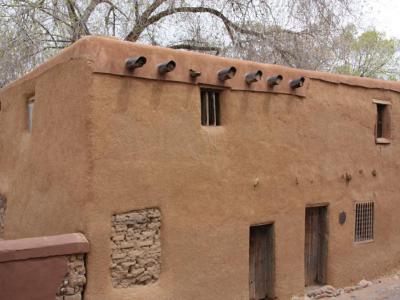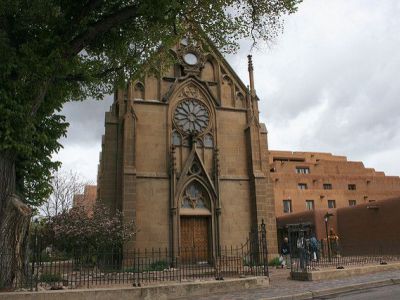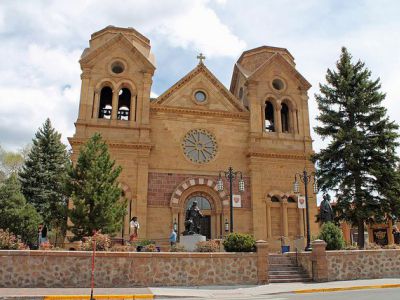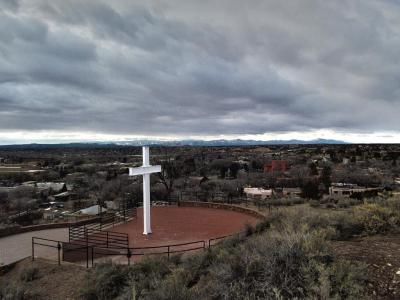Santa Fe Introduction Walking Tour (Self Guided), Santa Fe
Santa Fe's full name is La Villa Real de la Santa Fe de San Francisco de Asis, or "The Royal Town of the Holy Faith of Saint Francis of Assisi." Thankfully, everyone sticks with "Santa Fe" for simplicity's sake.
The area has been settled for several thousand years, first by the native Puebloan cultures. The Tewa people called the town Ogha Po'oge , which roughly translated to "White Shell Water Place." The Santa Fe River, running through the center of town, was the primary draw for settlers. Until the 1700s, the river had year-round water flow. Its flow is now only seasonal, and it's considered one of the country's most endangered rivers.
Spain's first effort to colonize the area came in 1598. Governor Juan de Oñate created a capitol north of present-day Santa Fe. The Spanish government eventually expelled De Oñate for cruelty to the indigenous people, and the next governor, Don Pedro de Peralta, settled in Santa Fe. In 1680, the Pueblo cultures banded together in revolt, and they ruled the area until 1692 when the Spanish reconquered the area. The US claimed the territory from Mexico in 1846, but it was not until 1912 that New Mexico became the 47th state in the Union.
Santa Fe is a beautiful town full of historical wonder. Influences from indigenous Indian cultures abound, from the adobe Puebloan-style buildings to the crafts sold along the Plaza. You'll also find European influences in many places, none so evident as at the Gothic-style Loretto Chapel. The Palace of Governors and New Mexico History Museums provide a great starting point to learn about the many different influences in the area. Follow this self-guided tour to visit the most important attractions in historic Santa Fe.
The area has been settled for several thousand years, first by the native Puebloan cultures. The Tewa people called the town Ogha Po'oge , which roughly translated to "White Shell Water Place." The Santa Fe River, running through the center of town, was the primary draw for settlers. Until the 1700s, the river had year-round water flow. Its flow is now only seasonal, and it's considered one of the country's most endangered rivers.
Spain's first effort to colonize the area came in 1598. Governor Juan de Oñate created a capitol north of present-day Santa Fe. The Spanish government eventually expelled De Oñate for cruelty to the indigenous people, and the next governor, Don Pedro de Peralta, settled in Santa Fe. In 1680, the Pueblo cultures banded together in revolt, and they ruled the area until 1692 when the Spanish reconquered the area. The US claimed the territory from Mexico in 1846, but it was not until 1912 that New Mexico became the 47th state in the Union.
Santa Fe is a beautiful town full of historical wonder. Influences from indigenous Indian cultures abound, from the adobe Puebloan-style buildings to the crafts sold along the Plaza. You'll also find European influences in many places, none so evident as at the Gothic-style Loretto Chapel. The Palace of Governors and New Mexico History Museums provide a great starting point to learn about the many different influences in the area. Follow this self-guided tour to visit the most important attractions in historic Santa Fe.
How it works: Download the app "GPSmyCity: Walks in 1K+ Cities" from Apple App Store or Google Play Store to your mobile phone or tablet. The app turns your mobile device into a personal tour guide and its built-in GPS navigation functions guide you from one tour stop to next. The app works offline, so no data plan is needed when traveling abroad.
Santa Fe Introduction Walking Tour Map
Guide Name: Santa Fe Introduction Walking Tour
Guide Location: USA » Santa Fe (See other walking tours in Santa Fe)
Guide Type: Self-guided Walking Tour (Sightseeing)
# of Attractions: 10
Tour Duration: 2 Hour(s)
Travel Distance: 3.4 Km or 2.1 Miles
Author: sabrina
Sight(s) Featured in This Guide:
Guide Location: USA » Santa Fe (See other walking tours in Santa Fe)
Guide Type: Self-guided Walking Tour (Sightseeing)
# of Attractions: 10
Tour Duration: 2 Hour(s)
Travel Distance: 3.4 Km or 2.1 Miles
Author: sabrina
Sight(s) Featured in This Guide:
- Santa Fe Plaza
- Palace of the Governors (New Mexico History Museum)
- Georgia O'Keeffe Museum
- Santuario de Guadalupe (Shrine of Our Lady of Guadalupe)
- New Mexico State Capitol
- San Miguel Mission [Oldest Church in the U.S.]
- Oldest House Museum (De Vargas Street House)
- Loretto Chapel
- Cathedral Basilica of St. Francis of Assisi
- Cross of the Martyrs
1) Santa Fe Plaza (must see)
When Santa Fe was established around 1609, its layout followed Spanish laws for town planning in the colonies, resulting in a central plaza fronted by the Palace of the Governors ("Casas Reales") on its north side. This charming square, with its shady radial walkways, remains the city's social hub, surrounded by blocks rich with history. Throughout the year, it hosts many excellent arts, music, and cultural festivals, such as the Fiestas de Santa Fe, usually held during the second week of September.
One of the most iconic sights in Santa Fe is along the north side under the portal of the Palace of the Governors: Native American Indians from all over New Mexico selling their crafts, a tradition since the 1930s. Over 500 vendors, who must pass a strict application process that evaluates their technical skills, are licensed to sell here. Each morning, the 69 spots, each 12 bricks wide, are allocated by lottery. You'll find a variety of items, from silver bracelets to pottery to "heishi" (shell bead) necklaces to freshly harvested piñon nuts. It's a fantastic opportunity to buy directly from skilled artisans and learn about the work involved in each piece.
The controversial Soldiers' Monument, known locally as "the obelisk", had occupied the center of the plaza since 1867 and was dedicated to those who died in "battles with savage Indians in the territory of New Mexico". It was pulled down by demonstrators in 2020.
One of the most iconic sights in Santa Fe is along the north side under the portal of the Palace of the Governors: Native American Indians from all over New Mexico selling their crafts, a tradition since the 1930s. Over 500 vendors, who must pass a strict application process that evaluates their technical skills, are licensed to sell here. Each morning, the 69 spots, each 12 bricks wide, are allocated by lottery. You'll find a variety of items, from silver bracelets to pottery to "heishi" (shell bead) necklaces to freshly harvested piñon nuts. It's a fantastic opportunity to buy directly from skilled artisans and learn about the work involved in each piece.
The controversial Soldiers' Monument, known locally as "the obelisk", had occupied the center of the plaza since 1867 and was dedicated to those who died in "battles with savage Indians in the territory of New Mexico". It was pulled down by demonstrators in 2020.
2) Palace of the Governors (New Mexico History Museum) (must see)
The Palace of the Governors, the former seat of Santa Fe's governance, is the oldest continuously occupied edifice in the United States erected by European settlers. This unassuming yet historically profound structure, constructed in 1610, has been the backdrop for several key events in the city's history. In 1693, Diego de Vargas valiantly battled Indian rebels within its walls when he reclaimed the city; ill-fated Mexican governor Albino Pérez met a grim fate, being beheaded in his office in 1837, and later, Governor Lew Wallace penned "Ben-Hur" (considered the most influential Christian book of the 19th century) here in the 1870s.
Inside, you'll find some of the most exquisite items in the state's collection, including trinkets and photographic prints from the 19th century alongside the stunning 18th-century Segesser hide paintings: two grand panels crafted from buffalo skin, depicting rare scenes of Spanish colonial battles. These works, along with the room they're in-decorated with 1909 murals-are truly worth the price of admission. In a couple of restored, furnished rooms, you can compare the living conditions of the Mexican leadership around 1845 to the relative comfort the U.S. governor enjoyed in 1893.
The Palace is part of the New Mexico History Museum complex, which also includes the newer building at the rear. There, you'll find more exhibits documenting the region's rich history.
Inside, you'll find some of the most exquisite items in the state's collection, including trinkets and photographic prints from the 19th century alongside the stunning 18th-century Segesser hide paintings: two grand panels crafted from buffalo skin, depicting rare scenes of Spanish colonial battles. These works, along with the room they're in-decorated with 1909 murals-are truly worth the price of admission. In a couple of restored, furnished rooms, you can compare the living conditions of the Mexican leadership around 1845 to the relative comfort the U.S. governor enjoyed in 1893.
The Palace is part of the New Mexico History Museum complex, which also includes the newer building at the rear. There, you'll find more exhibits documenting the region's rich history.
3) Georgia O'Keeffe Museum (must see)
Since 1997, this museum, just a skip northwest of the Santa Fe Plaza, has been paying homage to the artist who's practically part of New Mexico's DNA. O'Keeffe, the rebel of the New York art scene, often credited as the "Mother of American modernism", fell in love with the Land of Enchantment back in the roaring '20s and eventually settled in Abiquiu full-time in 1949 after her husband's demise.
Sure, a lot of O'Keeffe's greatest hits-those sensual, almost abstract flower blossoms-are hanging out in other big-name museums, but don't let that dampen your spirits. The exhibits here give you the backstage pass into O'Keeffe's world, showcasing not just her the works she has kept but also the odds and ends her foundation has been stockpiling since she passed in 1986. And sometimes, they toss in some side acts-her contemporaries or those whose work she influenced or admired.
If you're up for it, they've also got tours you can join in on. The Walk & Talk tour is pretty popular, and there's a deep dive into O'Keeffe's studio at Ghost Ranch in Abiquiu if you're inspired to learn more. Oh, and heads up, they're planning to move to a new spot on Grant Avenue in 2025. It's going to have a community garden and an increased focus on stewardship, so keep those calendars marked!
Sure, a lot of O'Keeffe's greatest hits-those sensual, almost abstract flower blossoms-are hanging out in other big-name museums, but don't let that dampen your spirits. The exhibits here give you the backstage pass into O'Keeffe's world, showcasing not just her the works she has kept but also the odds and ends her foundation has been stockpiling since she passed in 1986. And sometimes, they toss in some side acts-her contemporaries or those whose work she influenced or admired.
If you're up for it, they've also got tours you can join in on. The Walk & Talk tour is pretty popular, and there's a deep dive into O'Keeffe's studio at Ghost Ranch in Abiquiu if you're inspired to learn more. Oh, and heads up, they're planning to move to a new spot on Grant Avenue in 2025. It's going to have a community garden and an increased focus on stewardship, so keep those calendars marked!
4) Santuario de Guadalupe (Shrine of Our Lady of Guadalupe)
The Santuario is a big deal in Santa Fe, not just for its historical significance but also as a spot for performances. Back in the late 1700s, some seriously dedicated Franciscan missionaries slapped together this place with walls so thick you could practically live in them. It's the oldest shrine in the U.S. dedicated to none other than the Queen of the Americas herself.
Our Lady of Guadalupe is like the Beyoncé of the Catholic world – basically another name for the Virgin Mary. Legend has it, she made a grand entrance in 1531, pulling off five surprise appearances for a Mexican farmer. She even convinced him to pester the archbishop to build her a fancy new church. To prove she meant business, she made roses bloom in the most unlikely spots and even threw in a miracle healing for good measure. Needless to say, the archbishop was convinced.
Inside, there's this mesmerizing painting of the apparition saga, done by José de Alzibar, one of Mexico's finest colonial painters. They still do masses here, and if you're up for a bit of time travel, pop into the museum for a peek at relics from the Santuario's past lives. Think Greek-style columns, fancy Italian Renaissance, and enough Mexican baroque art to make your head spin.
Our Lady of Guadalupe is like the Beyoncé of the Catholic world – basically another name for the Virgin Mary. Legend has it, she made a grand entrance in 1531, pulling off five surprise appearances for a Mexican farmer. She even convinced him to pester the archbishop to build her a fancy new church. To prove she meant business, she made roses bloom in the most unlikely spots and even threw in a miracle healing for good measure. Needless to say, the archbishop was convinced.
Inside, there's this mesmerizing painting of the apparition saga, done by José de Alzibar, one of Mexico's finest colonial painters. They still do masses here, and if you're up for a bit of time travel, pop into the museum for a peek at relics from the Santuario's past lives. Think Greek-style columns, fancy Italian Renaissance, and enough Mexican baroque art to make your head spin.
5) New Mexico State Capitol
The State Capitol, built in 1966, is a unique round building with entrances at each of its cardinal points. They designed it to resemble the Zia sun symbol used on the state flag, which you'll notice if you ever get the chance to peek down on it. Right in the center of the rotunda, there's also a mosaic version of the state seal: a Mexican brown eagle holding onto a snake and shielded by the American bald eagle. And don't forget to crane your neck and marvel at the stained-glass skylight, sporting an intricate Indian basket-weave pattern.
But the Roundhouse, as folks call it, isn't just about looks. It's got a hidden gem: a sweet art collection that doesn't cost a dime to check out, with pieces from some of the state's top artists. Paintings, photographs, you name it-every nook and cranny is dripping with creativity. Catch some culture on every floor, including the senate balcony and the swanky Governor's Gallery up on the fourth floor.
When the legislators are busy doing their legislating thing (which isn't all that often), you can pop in and watch the action from the galleries. Otherwise, take a stroll around the place and soak in the six and a half acres of garden, packed with over a hundred plant varieties and statues honoring the native Pueblo people.
But the Roundhouse, as folks call it, isn't just about looks. It's got a hidden gem: a sweet art collection that doesn't cost a dime to check out, with pieces from some of the state's top artists. Paintings, photographs, you name it-every nook and cranny is dripping with creativity. Catch some culture on every floor, including the senate balcony and the swanky Governor's Gallery up on the fourth floor.
When the legislators are busy doing their legislating thing (which isn't all that often), you can pop in and watch the action from the galleries. Otherwise, take a stroll around the place and soak in the six and a half acres of garden, packed with over a hundred plant varieties and statues honoring the native Pueblo people.
6) San Miguel Mission [Oldest Church in the U.S.] (must see)
Back in 1610, some Franciscan friars got busy and put up what's now the oldest church in the States. This was Santa Fe's first church, and those Spanish missionaries were smart enough to plonk it down across the river where the native folks were hanging out. They were all about spreading the good word, so they whipped up this mission before even sorting out their own church closer to the Plaza.
Now, this place has seen its fair share of facelifts, so it's tough to say what's original and what's not. It's made of adobe with walls about five feet thick, and they threw in some stone buttresses in 1887 to keep everything from going sideways. The original church was likely a bit smaller, but it's been spruced up despite being set on fire during the Pueblo Revolt, and keeps standing on the same old foundations.
But enough about the exterior-let's dive into some juicy bits. The interior snug and whitewashed, with a restored late-18th-century altar screen that's seen its fair share of adventures. Covered in layers of house paint for years, it is the handiwork of an anonymous Mexican artist and acts like a giant picture frame, stuffed with oil paintings and bultos (fancy term for those painted wooden saint statues). And if you peek beneath your feet, you'll catch a glimpse of the church's original foundations-talk about history underfoot!
Tucked away at the back, San Miguel's old bell supposedly hails from Spain way back in 1356 – or so the engraving claims. Historians aren't buying it: They reckon it's more likely a sneaky defect that made an 8 look like a 3. Anyway, it made its way to the New World and landed here in the early 1800s, and it still hums like a charm, even with just a little tap.
Now, this place has seen its fair share of facelifts, so it's tough to say what's original and what's not. It's made of adobe with walls about five feet thick, and they threw in some stone buttresses in 1887 to keep everything from going sideways. The original church was likely a bit smaller, but it's been spruced up despite being set on fire during the Pueblo Revolt, and keeps standing on the same old foundations.
But enough about the exterior-let's dive into some juicy bits. The interior snug and whitewashed, with a restored late-18th-century altar screen that's seen its fair share of adventures. Covered in layers of house paint for years, it is the handiwork of an anonymous Mexican artist and acts like a giant picture frame, stuffed with oil paintings and bultos (fancy term for those painted wooden saint statues). And if you peek beneath your feet, you'll catch a glimpse of the church's original foundations-talk about history underfoot!
Tucked away at the back, San Miguel's old bell supposedly hails from Spain way back in 1356 – or so the engraving claims. Historians aren't buying it: They reckon it's more likely a sneaky defect that made an 8 look like a 3. Anyway, it made its way to the New World and landed here in the early 1800s, and it still hums like a charm, even with just a little tap.
7) Oldest House Museum (De Vargas Street House)
To get a real feel for how folks lived back in the day, swing by 215 East De Vargas Street in Santa Fe – home to what's claimed to be the oldest house in the U.S. Inside, it's like stepping into a cave, complete with a cozy corner fireplace straight out of Spain. The first floor is original, while the upper floor was reconstructed in the 1920s. Most of the structure is built from adobe brick, which was a Spanish colonial technology, while a few lower wall sections are puddled adobe characteristic of pre-Spanish pueblo dwellings.
The exact birth date of this house is a bit of a mystery, but it's got ties to the Barrio de Analco across the river from the Plaza, where the working-class folks of old Santa Fe lived. Some archaeologists even think bits of this home might have been kicking around before the Spanish showed up, possibly from the late 1700s.
Regardless of the true age, years of calling it the "Oldest House" have become engrained in local lore and evidence from the property proves that the wooden vigas (or ceiling beams) were cut between 1740 and 1767, so this place definitely has some history to it. Plus, it's a key player in the Barrio De Analco Historic District, rubbing shoulders with six other old-timers from way back when.
Tip:
For a bit of contrast, check out the Eldorado Hotel over on 309 West San Francisco Street, to see how flexible the idea of mud construction can be. It's a recent expression of the Santa Fe style, or Spanish-Pueblo Revival style, which has been in vogue since the 1920s. Like most newer buildings in Santa Fe, however, the Eldorado is not real adobe; it simply wears an adobe-style stucco veneer.
The exact birth date of this house is a bit of a mystery, but it's got ties to the Barrio de Analco across the river from the Plaza, where the working-class folks of old Santa Fe lived. Some archaeologists even think bits of this home might have been kicking around before the Spanish showed up, possibly from the late 1700s.
Regardless of the true age, years of calling it the "Oldest House" have become engrained in local lore and evidence from the property proves that the wooden vigas (or ceiling beams) were cut between 1740 and 1767, so this place definitely has some history to it. Plus, it's a key player in the Barrio De Analco Historic District, rubbing shoulders with six other old-timers from way back when.
Tip:
For a bit of contrast, check out the Eldorado Hotel over on 309 West San Francisco Street, to see how flexible the idea of mud construction can be. It's a recent expression of the Santa Fe style, or Spanish-Pueblo Revival style, which has been in vogue since the 1920s. Like most newer buildings in Santa Fe, however, the Eldorado is not real adobe; it simply wears an adobe-style stucco veneer.
8) Loretto Chapel (must see)
Loretto Chapel, the first Gothic-style building west of the Mississippi, was constructed alongside the Cathedral Basilica of Saint Francis of Assisi for the Sisters of Loretto, New Mexico's pioneering nuns. Originally named the Chapel of Our Lady of Light, this project kicked off in 1873 with the aim of mirroring the grandeur of Sainte-Chapelle in Paris, France. The Chapel's materials, including stones from quarries 200 miles south, and the expertise of French architects and Italian stonemasons were shared with the Cathedral Basilica. With its spires, buttresses, and imported harmonium and stained-glass windows from France, Loretto exudes architectural splendor.
But what truly draws the eye is the exquisite spiral staircase, dubbed the "Miraculous Stairs", leading to the choir loft. Crafted entirely from wood, this marvel winds gracefully without any central support pole, defying gravity like it's no big deal. Legend has it that in 1878, a mysterious carpenter, seemingly guided by the Sisters of Loretto's spiritual call, silently toiled for six months flat to create this masterpiece. And then, like a true mystery man, he vanished into thin air, leaving behind nothing but whispers of his craftiness. These fascinating tales, along with other historical nuggets, are shared on a looped recording inside the chapel.
But what truly draws the eye is the exquisite spiral staircase, dubbed the "Miraculous Stairs", leading to the choir loft. Crafted entirely from wood, this marvel winds gracefully without any central support pole, defying gravity like it's no big deal. Legend has it that in 1878, a mysterious carpenter, seemingly guided by the Sisters of Loretto's spiritual call, silently toiled for six months flat to create this masterpiece. And then, like a true mystery man, he vanished into thin air, leaving behind nothing but whispers of his craftiness. These fascinating tales, along with other historical nuggets, are shared on a looped recording inside the chapel.
9) Cathedral Basilica of St. Francis of Assisi (must see)
Santa Fe's majestic Cathedral Basilica of Saint Francis of Assisi, at the end of East San Francisco Street, is a testament to the vision of Bishop Jean-Baptiste Lamy, who oversaw its construction over a span of 15 years in the late 19th century. Known for his determination to "elevate" the city to European standards, Lamy's ambitious project resulted in this grandiose cathedral, towering over the landscape.
Lamy's disdain for the local religious customs, including the cult of the Virgin of Guadalupe and the Penitente brotherhood's practices, drove him to build a cathedral that surpassed the aesthetics and standards of the existing adobe structures. The original tiny adobe church dedicated to Saint Francis of Assisi, standing for 170 years, served as the framework for the new stone cathedral, constructed in Romanesque Revival style. However, due to financial constraints, Lamy's dream of domed towers atop the facade remained unfulfilled.
Inside, visitors are greeted by Gothic-inspired architecture, flooded with light from glowing stained-glass windows. A striking gilt altar screen, installed in 1987 for the building's centennial dedication, showcases primarily New World saints, including Kateri Tekakwitha, a 17th-century Mohawk woman canonized in 2012. Adjacent to the main altar stands the salvaged adobe chapel dedicated to La Conquistadora, a revered Native American statue with a storied history dating back to the 17th century.
As you make your grand exit, take a moment to appreciate the great cast-bronze doors, each panel telling a tale of New Mexico's Catholic history. These doors offer glimpses into the cathedral's past, including scenes of Italian stoneworkers constructing the edifice and families fleeing during the 1680 Pueblo Revolt-a rare depiction sympathetic to the Spanish perspective.
Lamy's disdain for the local religious customs, including the cult of the Virgin of Guadalupe and the Penitente brotherhood's practices, drove him to build a cathedral that surpassed the aesthetics and standards of the existing adobe structures. The original tiny adobe church dedicated to Saint Francis of Assisi, standing for 170 years, served as the framework for the new stone cathedral, constructed in Romanesque Revival style. However, due to financial constraints, Lamy's dream of domed towers atop the facade remained unfulfilled.
Inside, visitors are greeted by Gothic-inspired architecture, flooded with light from glowing stained-glass windows. A striking gilt altar screen, installed in 1987 for the building's centennial dedication, showcases primarily New World saints, including Kateri Tekakwitha, a 17th-century Mohawk woman canonized in 2012. Adjacent to the main altar stands the salvaged adobe chapel dedicated to La Conquistadora, a revered Native American statue with a storied history dating back to the 17th century.
As you make your grand exit, take a moment to appreciate the great cast-bronze doors, each panel telling a tale of New Mexico's Catholic history. These doors offer glimpses into the cathedral's past, including scenes of Italian stoneworkers constructing the edifice and families fleeing during the 1680 Pueblo Revolt-a rare depiction sympathetic to the Spanish perspective.
10) Cross of the Martyrs
You'll find the Cross of the Martyrs a short hike away on a hilltop near the Santa Fe Plaza. Dedicated to the Franciscan friars killed during the 1680 Pueblo Revolt, this site offers great views of the city from above. The hike isn't strenuous, but there are ten sets of stairs along the way. But there are plenty of spots to rest, numerous plaques along the route which provide a history lesson, and lots of fresh air.
Starting in 1540, the Pueblo Native Americans that lived in the Southwest were subject to a steady wave of Spanish soldiers, missionaries, and colonists. Encounters were often violent, and many Pueblo people were enslaved. The delicate balance of power lasted for more than 100 years, but in 1670 a severe drought and raids by the Apache brought extreme hardships to the region. With unrest growing, Governor Juan Francisco Treviño had 47 Pueblo medicine men arrested for practicing "sorcery." With many of his soldiers away tending to the Apache situation, when Pueblo leaders moved with force to rescue their medicine men, Treviño had little choice to give up the prisoners.
One of the prisoners was known as Popé, and he fled to Taos Pueblo, where he began seeding support for a revolt. He spent five years getting support from more than 46 Pueblo towns. The surviving Spanish fled Santa Fe, only to return 12 years later.
Starting in 1540, the Pueblo Native Americans that lived in the Southwest were subject to a steady wave of Spanish soldiers, missionaries, and colonists. Encounters were often violent, and many Pueblo people were enslaved. The delicate balance of power lasted for more than 100 years, but in 1670 a severe drought and raids by the Apache brought extreme hardships to the region. With unrest growing, Governor Juan Francisco Treviño had 47 Pueblo medicine men arrested for practicing "sorcery." With many of his soldiers away tending to the Apache situation, when Pueblo leaders moved with force to rescue their medicine men, Treviño had little choice to give up the prisoners.
One of the prisoners was known as Popé, and he fled to Taos Pueblo, where he began seeding support for a revolt. He spent five years getting support from more than 46 Pueblo towns. The surviving Spanish fled Santa Fe, only to return 12 years later.
Walking Tours in Santa Fe, New Mexico
Create Your Own Walk in Santa Fe
Creating your own self-guided walk in Santa Fe is easy and fun. Choose the city attractions that you want to see and a walk route map will be created just for you. You can even set your hotel as the start point of the walk.
Historical Churches
In Santa Fe, there's no shortage of religious sites fit to impress. Some of the local churches date back as far as the foundation of the city itself. As you immerse in their hallowed halls, prepare yourself to be enraptured by their architectural and spiritual splendor.
One such venerable place is undoubtedly the San Miguel Mission. The oldest church in the United States, it was built... view more
Tour Duration: 1 Hour(s)
Travel Distance: 2.8 Km or 1.7 Miles
One such venerable place is undoubtedly the San Miguel Mission. The oldest church in the United States, it was built... view more
Tour Duration: 1 Hour(s)
Travel Distance: 2.8 Km or 1.7 Miles
Canyon Road Art and Architecture Tour
Whether your interest lies in art, architecture, history or food, you'll be able to satisfy it fully on Canyon Road. Situated just east of the Santa Fe Plaza, Canyon Road is home of Santa Fe's thriving art market selling artwork from both famed and indie artists. There are over 100 art galleries dotted along the one-mile street, making it the third largest art market in the country.
... view more
Tour Duration: 1 Hour(s)
Travel Distance: 1.0 Km or 0.6 Miles
... view more
Tour Duration: 1 Hour(s)
Travel Distance: 1.0 Km or 0.6 Miles
The Most Popular Cities
/ view all



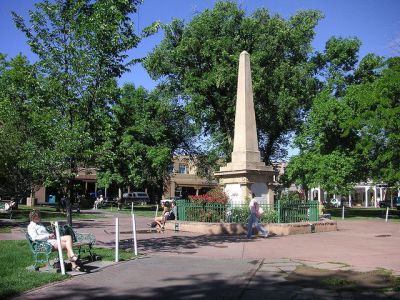
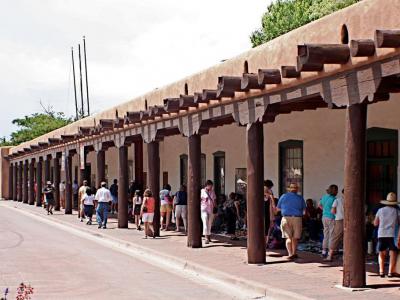
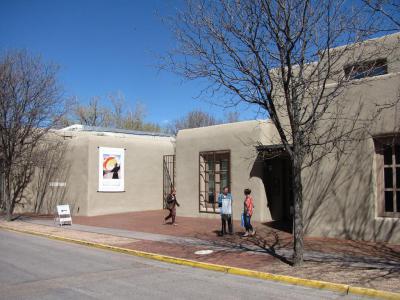
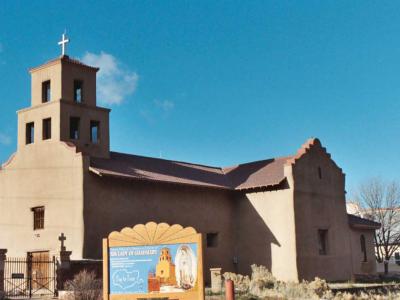
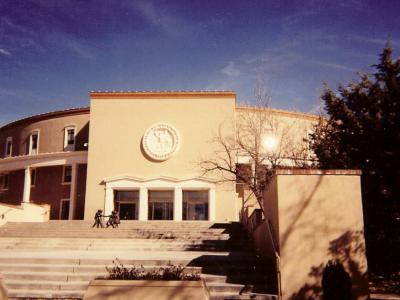
![San Miguel Mission [Oldest Church in the U.S.]](/img/gd_attr/35140.jpg)
